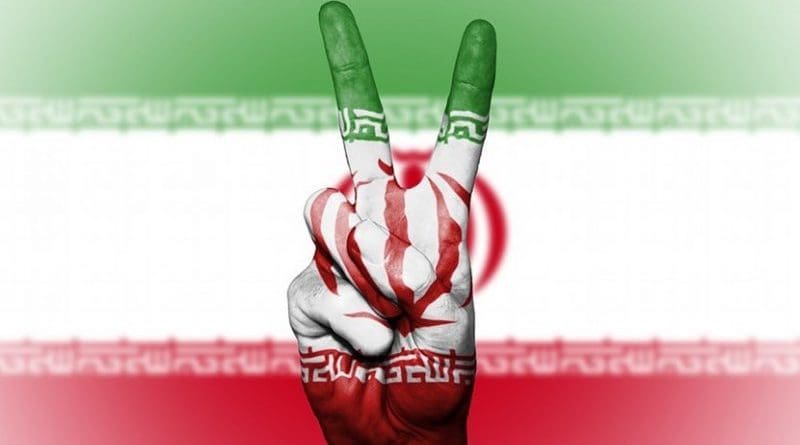Iran Is Uneasy Right Now – OpEd
By Sara-Gul
Iran has been in a state of extraordinary upheaval since the Islamic revolution, led by Ayatollah Ruhollah Khomeini, replaced the 2,500-year-old Persian monarchy with a religious oligarchy. The country has had several anti-regime uprisings in the previous 43 years, but there is a significant difference between those uprisings and the current one.
According to the ultra-conservative Javan Daily, which is affiliated with the Islamic Revolutionary Guard Corps (IRGC), “93% of the demonstrators” are under the age of 25, indicating the emergence of a “new generation of rioters in the country.” Another difference is that women have taken center stage this time around.
Mahsa Amini, a 22-year-old Iranian woman of Kurdish descent, was detained by Iran’s notorious morality police on September 13, 2022, while visiting her brother in Tehran. Her alleged transgression was that she was “improperly” wearing her hijab. When Mahsa, also known by her Kurdish name Jhina, was brought to the Vozara Detention Center, she passed out. She died three days later. She allegedly suffered brain trauma after hitting her head against a car and receiving a baton to the head. According to the police, she died of natural causes.
After being inspired by its young women, the Iranian people erupted in protest. Thousands of people took to the streets in cities across the country. Protests quickly spread to all 31 provinces across the country. They began by attempting to combat the strict dress code imposed on women and enforced by the morality police. When protesters turned their attention to the dictatorship and the Supreme Leader, the slogan “Death to the Dictator” first appeared on posters. Security personnel used tear gas, pellet guns, and then real bullets to respond.
Individuals being shot dead in the streets became impossible to conceal. According to a statement issued on December 3 by the Iranian interior ministry’s state security council, 200 people were killed in total. Security personnel, terrorists, people killed by foreign-affiliated parties but falsely claimed to have been killed by the state, rioters, and “armed anti-revolutionary elements who were members of secessionist groups” were among those shot, according to the report.
Iran’s establishment, which had previously been impenetrable on matters of state security, began to crumble. According to top IRGC general Amir Ali Hajizadeh, over 300 people have been “martyred and slain” during the uprising. Some international human rights organizations considered his estimate to be an underestimation, estimating the death toll at over 400. According to a report from the Human Rights Activists’ News Agency (HRANA) cited by the BBC on December 8, 475 people have been killed by security forces so far.
On December 8, the first Iranian citizen was executed for his involvement in the ongoing unrest. Mohsen Shekari was hanged after being found guilty of fighting and brandishing a weapon by a Revolutionary Court. At least ten more protesters who were detained have been sentenced to death.
“I am completely horrified, startled, and outraged by Mohsen Shekari’s death,” UN Special Rapporteur Javaid Rehman said on radio. There is evidence that Shekari was tortured, and he was denied access to counsel. According to one activist, it was a “show trial without due process.”
The supreme leader of Iran, Ayatollah Ali Khamenei, has been personally affected by the level of annoyance felt by large segments of the Iranian population.
Farideh Moradkhani, his niece, was arrested on November 23. She is a well-known human rights activist who is critical of the Iranian government. In a video statement posted by her brother two days later, she urged people all over the world to tell their governments to cut ties with the Iranian government.
“Be with us, and demand that your governments stop assisting this cruel and child-killing tyranny,” she said.
All of humanity is now watching as the Iranian people confront evil forces at a critical juncture in history, acting bravely and with empty hands.
When his own family members criticize his leadership and government, Khamenei must be angry and humiliated. Last week, there was widespread speculation that the dictatorship was making a significant concession to the populace by disbanding the infamous morality police. Iran’s attorney general, Mohammad Jafar Montazeri, gave the impression that the morality police might no longer exist. “The morality police had nothing to do with the judiciary and have been decommissioned from where they were established,” he added cryptically. His precise meaning continues to perplex Iranian observers.
Meanwhile, opposition to the regime in Iran is still raging, and it is being increasingly suppressed. Will the resentment and rage eventually lead to a full-fledged revolution? Many people believe the regime is stable enough to withstand and limit the current wave of protests. Others believe that this is the beginning of the end for the Islamic Republic of Iran.
Sara-Gul is a student of International Relations from the University of Balochistan.

